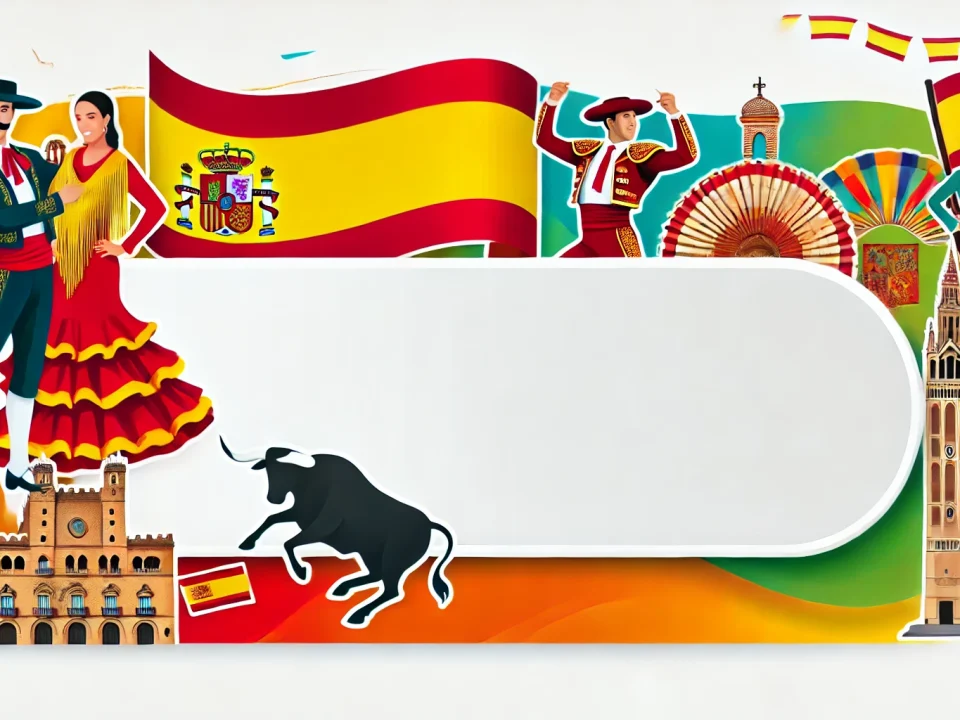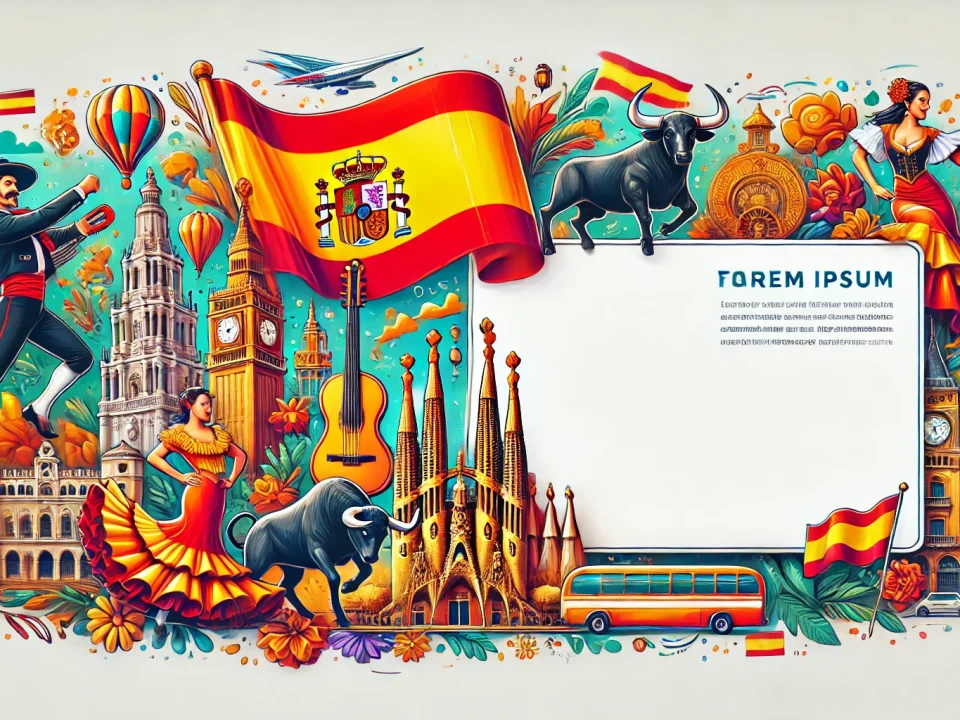
Learning Numbers in Spanish
July 28, 2024
Learning the Days of the Week in Spanish
July 28, 2024Learning Colors in Spanish
Learning colors in Grammar Spanish is an essential part of learning the language, especially for beginners. Colors are used in everyday conversation to describe objects, express preferences, and more. This comprehensive guide will cover the basic colors in Spanish, provide examples, and help you understand their usage in different contexts. By the end of this article, you will be comfortable using Spanish colors and able to incorporate them into your daily conversations.
Basic Colors (Los Colores Básicos)
Let’s start with the basic colors. These are the fundamental colors you need to know:
- Rojo: Red
- Azul: Blue
- Verde: Green
- Amarillo: Yellow
- Negro: Black
- Blanco: White
- Gris: Gray
- Marrón/Café: Brown
- Naranja: Orange
- Rosa: Pink
- Morado: Purple
Pronunciation Guide
Here’s a quick pronunciation guide to help you say these colors correctly:
- Rojo: ROH-hoh
- Azul: ah-SOOL
- Verde: BEHR-deh
- Amarillo: ah-mah-REE-yoh
- Negro: NEH-groh
- Blanco: BLAHN-koh
- Gris: GREES
- Marrón/Café: mah-ROHN / kah-FEH
- Naranja: nah-RAHN-hah
- Rosa: ROH-sah
- Morado: moh-RAH-doh
Using Colors in Sentences
Knowing the vocabulary is just the first step. Here are some examples of how to use these words in sentences:
- Mi coche es rojo. (My car is red.)
- Ella tiene un vestido azul. (She has a blue dress.)
- Me gusta el césped verde. (I like the green grass.)
- El sol es amarillo. (The sun is yellow.)
- El gato negro es muy bonito. (The black cat is very pretty.)
- La nieve es blanca. (The snow is white.)
- El elefante es gris. (The elephant is gray.)
- Tengo una chaqueta marrón. (I have a brown jacket.)
- El jugo de naranja es delicioso. (Orange juice is delicious.)
- La flor rosa es hermosa. (The pink flower is beautiful.)
- Mi libro favorito es morado. (My favorite book is purple.)
Describing Objects with Colors
Describing objects with colors is a common way to practice and reinforce your understanding of Spanish colors. Here are some examples:
- La manzana roja está en la mesa. (The red apple is on the table.)
- Los zapatos azules son nuevos. (The blue shoes are new.)
- Las hojas verdes caen en otoño. (The green leaves fall in autumn.)
- La camisa amarilla es muy brillante. (The yellow shirt is very bright.)
- El perro negro duerme en el jardín. (The black dog sleeps in the garden.)
- La pared blanca necesita pintura. (The white wall needs paint.)
- El gato gris está en el sofá. (The gray cat is on the sofa.)
- El oso marrón vive en el bosque. (The brown bear lives in the forest.)
- La zanahoria naranja es saludable. (The orange carrot is healthy.)
- La camiseta rosa es de mi hermana. (The pink t-shirt is my sister’s.)
- La uva morada es dulce. (The purple grape is sweet.)
Learning Colors in Spanish
Colors and Agreement
In Spanish, adjectives must agree in gender and number with the nouns they describe. Colors are no exception. Here’s how you make colors agree with different nouns:
Singular and Plural Forms
- Rojo (Red)
- Masculine singular: rojo
- Feminine singular: roja
- Masculine plural: rojos
- Feminine plural: rojas
- Azul (Blue)
- Masculine singular: azul
- Feminine singular: azul
- Masculine plural: azules
- Feminine plural: azules
Examples
- El coche rojo. (The red car – masculine singular)
- La camisa roja. (The red shirt – feminine singular)
- Los coches rojos. (The red cars – masculine plural)
- Las camisas rojas. (The red shirts – feminine plural)
- El libro azul. (The blue book – masculine singular)
- La silla azul. (The blue chair – feminine singular)
- Los libros azules. (The blue books – masculine plural)
- Las sillas azules. (The blue chairs – feminine plural)
Additional Color Vocabulary
Here are some additional colors that you might find useful:
- Violeta: Violet
- Turquesa: Turquoise
- Celeste: Sky blue
- Beige: Beige
- Dorado: Golden
- Plateado: Silver
- Fucsia: Fuchsia
- Lavanda: Lavender
Using Colors in Context
Colors are often used in various contexts, such as describing clothing, objects, nature, and more. Here are some scenarios to help you practice:
Clothing
- Me gusta tu vestido azul. (I like your blue dress.)
- Él lleva una camiseta blanca. (He is wearing a white t-shirt.)
- Compré un abrigo negro. (I bought a black coat.)
Objects
- El coche rojo es rápido. (The red car is fast.)
- Tengo una mochila verde. (I have a green backpack.)
- La mesa marrón es de madera. (The brown table is made of wood.)
Nature
- El cielo es azul. (The sky is blue.)
- Las flores son rosas. (The flowers are pink.)
- El agua del mar es turquesa. (The sea water is turquoise.)
Practice Exercises
To reinforce your understanding of colors in Spanish, try these exercises:
- Translate the Colors: Write the following colors in Spanish:
- Green
- Yellow
- Purple
- White
- Gray
- Complete the Sentences: Fill in the blanks with the correct color in Spanish:
- El coche es __. (The car is red.)
- La flor es __. (The flower is pink.)
- Los libros son __. (The books are blue.)
- La casa es __. (The house is white.)
- Las manzanas son __. (The apples are green.)
- Match the Colors: Match the Spanish colors with their English equivalents:
- Amarillo
- Negro
- Blanco
- Marrón
- Naranja
- Yellow
- Black
- White
- Brown
- Orange
- Describe Objects: Write a short paragraph describing various objects using at least five different colors. For example, describe the items in your room, a scene in nature, or clothing.
Additional Tips for Learning Colors
- Use Flashcards: Create flashcards with the color on one side and the Spanish word on the other. This will help reinforce your memory.
- Label Items: Label items around your house with their color in Spanish.
- Practice with Art: Use coloring books or art projects to practice identifying and using colors in Spanish.
- Engage with Media: Watch Spanish videos, shows, or cartoons that focus on colors to see them used in context.
Conclusion
Learning colors in Spanish is an essential part of building your vocabulary and improving your conversational skills. By mastering the basic colors and understanding how to use them in different contexts, you will significantly enhance your ability to communicate in Spanish. Practice regularly, use the colors in daily conversations, and soon you will be confident in your ability to use Spanish colors fluently. ¡Buena suerte! (Good luck!) – Spain
Learning Italian Vocabulary: Colors (I Colori)
Learning Common Colors in French



2 Comments
[…] Learning Colors in Spanish […]
[…] Learning Colors in Spanish […]